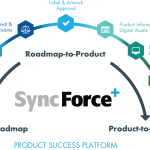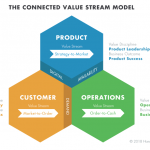Large organizations increasingly have the desire to become as agile as start-ups. Unfortunately, however, size often seems to be inversely related to flexibility. As the worldwide pace of change continues to accelerate, size is becoming a disadvantage like never before. The answer to this challenge might be an idea that has been around for a few decades: zero-based budgeting & resourcing.

Large companies know they need to inject a bit of agility into their organizations. Some try to solve this issue by allocating resources to innovative spin-offs or in-house projects. They give time, tools and resources to a team of inventors to develop a shiny new product or service. These initiatives can be effective, but often foster resentment across the organization: why do those guys get money (and a few months off) to work on cool projects while we have to keep up the real work?
So what’s stopping your large organization from being truly agile? Usually, it’s at least one of three things:
– Resources are trapped in annual plans
– Information is hard to access
– Turning the tanker takes time
Resources are trapped in annual plans
If the CEO of a small company spots an opportunity, all they must do is allocate resources to it: people, budget, time and tools. The opposite is true for most large enterprises. Resources are stuck in annual plans and budgets. Budget holders tend to get the same amount they did in the previous period – maybe a little more or less, depending on the results generated and opportunities perceived. This constricts a leader’s ability to respond to opportunities or threats. Real agility is continuously (re)allocating budget and resources based on the potential impact of new opportunities, like introducing a new product or upgrading a production facility.

Information is hard to access
It’s easier to understand the full context of a decision if its scope is fairly limited. CEOs of small – and therefore agile – organizations work closely together as one team. People in marketing, R&D, finance, and logistics probably even share a lunch table. For the CEO of a multi-billion FMCG manufacturer, however, it’s exceptionally difficult to keep an ear to the ground across the entire company. Sure, the CMO regularly reports on developments in their department; so will every other manager. But it’s all second- or third-hand information. In reality, large enterprises develop into a series of silos, each organized around their own standards and processes. It can be mind-blowingly difficult to have instant access to all the relevant information across each group that you need in order to make the best decision.
Turning the tanker takes time
Even in the best case – you make the right decision and can find a budget that’s not reserved for anything else – getting the entire organisation behind you can be a real drag. There’s a reason why big multinational companies work with strategic long-term plans; changing the direction of a large oil tanker requires a lot of energy and time. Communication is key. All stakeholders need to be looped in with the ongoing changes. That’s a lot easier to do over your daily sandwich than during a quarterly all-hands meeting.
Nothing is impossible
There is a silver lining, though. One key to agility is being up-to-date on market developments and resource availability. Bring those two together and the opportunities are endless. The first thing you need is to centrally manage the end-to-end pipeline of opportunities for growth, including the required resource and budget requirements. The second requirement is instant insight into the actual resource and budget status. With this in place, your organization can instantly make decisions to start, speed-up or sometimes even more important: stop initiatives.
The secret to real agility, however, is zero-based budgeting. Although the idea’s been around since the 1950s, attempts to put it into practice are still often smothered by bureaucracy. From an internal politics perspective, it’s difficult to start with no allocated budget and put your money where opportunities present themselves. After all, agility in business is impossible without agile resources and agile decision-making.
Six steps towards zero-based budgeting & resourcing
Zero-based resource allocation which covers both human and capital resources means that every team starts on zero. What you need to do is prioritize projects and have insight into end-to-end planning; that means making sure that you still have the resources and budgets available for all teams for every initiative – not only R&D but also market research, supply and marketing support costs.
The zero-based process for agility in the enterprise follows six steps:
- Determine the value of each initiative for the business using standardized business cases & project scorecards
- Estimate the required resources (both human and capital), end-to-end meaning for all functions from R&D to Trade & Digital Marketing.
- Have instant insight into the actual available capacity, both in terms of budgets and human resources
- Objectively decide which projects to start. A start decision will automatically allocate all required human and capital resources to finish the project.
- Re-evaluate every month/quarter: What is the actual status of running projects? What is the actual budget status in resource demand? Are there new opportunities and threats we need to respond to?
- Make decisions which projects to start, cancel, speed-up or slow-down
In short: when you stop relying on fixed budgets assigned to silos, set in stone in a year plan and replace that with a dynamic pipeline collaboration platform, you will create the essential foundation that allows you to achieve the same level of agility as the start-ups aiming for your market share.

